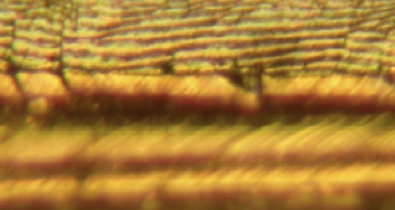WEDNESDAY MAY 12, 1999
IMAGE ANALYSIS OF ULTRASOUND BIOMICROSCOPY OF HUMAN CORNEA

This is a joint work with my brother Francesco :)
The keratoconus is a corneal dystrophy evidenced by a progressive asymmetric increment of the corneal curvature and by a thickness reduction in the central area. In a recent work the Keratoconus Index (KI) has been correlated to a pathology, called keratoconus, of the human eye. The KI, using ultrabiomicroscopic measurements of the central and peripheral corneal thickness, allow to quantify the corneal thinning and gives to the ophthalmologist a new and useful tool for the follow-up of these patients. Moreover it has been recently proposed the possibility of a new keratoconus classification by means of the progressive corneal thinning computed by the ultrasound biomicroscopy. We developed a method that uses common image analysis algorithms to automatically calculate the KI, starting from Ultrasound Biomicroscopy images of the cornea. This project has been developed in collaboration with the Institute of Ophtalmology of the University of Catania (Italy). By means of the variance analysis and the correlation coefficient we have demonstrated the agreement of the automatic results with a control group of results: in 95\% the statistical correlation was good. This automatic method to compute the KI represents, in our opinion, a useful tool to speed up the objective identification of the keratoconus classification based on the central corneal thinning that could be placed side by side to the already well known methodology based on the corneal topography.
Filippo Castiglione and Francesco Castiglione. Estimating the Keratoconus Index from ultrasound images of the human cornea, IEEE Transaction on Medical Image 19(12), 1268-1227 (2000)
T. Avitabile, L. Franco, E. Ortisi, Francesco Castiglione, M. Pulvirenti, B. Torrisi, Filippo Castiglione, A Reibaldi. Keratoconus Staging: A Computer-Assisted Ultrabiomicroscopic Method Compared With Videokeratographic Analysis. Cornea. 23(7):655-660, (2004).
SYSTEM